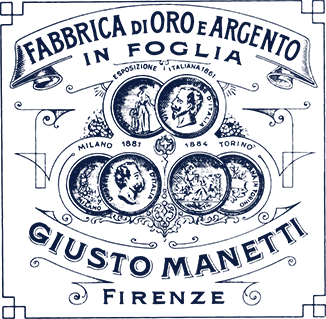Events and news
Events and newsGOLD LEAF HISTORY IN THE ART
Gold leaf history started with the use of gold leaf in sculpture or painting and dates back to Egypt.
Gold was the color of the gods, the pharaohs, and the sarcophagi. Gold leaf was therefore mainly used for decorating the rooms in the pyramids that were intended as the pharaoh’s tomb.

At the time of ancient Greece, gold leaf was mainly used to decorate statues. The most famous of these were the chryselephantine statues, which were made primarily of ivory and gold leaf (in Greek Chrysos means gold and elephántinos ivory).
The most famous of these were the chryselephantine statues, which were made primarily of ivory and gold leaf (in Greek Chrysos means gold and elephántinos ivory).
The bare parts of the statue, such as the arms, face, and legs, were made of ivory, while the robes, armor, hair, and accessories were covered with gold leaf. The chryselephantine statues not only required great skill on the part of their creators but also required ongoing and difficult maintenance.
According to gold leaf history’s scholars, this type of work included the statues, now vanished, of Athena at the Parthenon and Zeus in the Temple of Olympia, both the work of Phidias. Precisely because of the value of the materials with which they were made, the statues were destroyed during the medieval wars, and their existence is known today thanks to a series of miniatures found in Athens, and particularly, the recovered fragments of the statue of the god Apollo at Delphi.
From 400 AD gold leaf history was illuminated by manuscripts that were being created in Constantinople, Ireland and Italy.
These works included not only texts but also artistic decorations, such as initials, borders and miniatures, often made with gold or silver leaf. In addition to the illuminated manuscripts, gold leaf was used in the painting of the Middle Ages as a symbol, par excellence, of Christian art.
In the sacred paintings of the time, the sky was made using gold leaf, and this was called “gold-ground” painting; this technique reached its height around 1300, first in Italy and the Byzantine Empire, and then other European countries. Another widespread application for gold leaf was that of halos, which were used in iconoclastic representations to distinguish the sacred figures, but in some cases, especially in Greece, to depict commanders and heroes as well.
Another widespread application for gold leaf was that of halos, which were used in iconoclastic representations to distinguish the sacred figures, but in some cases, especially in Greece, to depict commanders and heroes as well.
During the 1800s, gold leaf history arrived at a turning point and underwent a new fashionable period in sculpture.
An example of this new trend is the statue of Joan of Arc, created by Emmanuel Frémiet in 1874 to celebrate the medieval French heroine. The statue was recently restored with gold leaf by Giusto Manetti Battiloro.
In the world of modern painting, gold leaf was used by painters and artists to decorate various works. Of these artists, the most famous is undoubtedly Gustav Klimt (1862-1918). During what was called his “golden phase”, the artist created a series of paintings with gold leaf and reached the pinnacle of his success.
The first painting he made in this period was “Judith I”, while the most famous works of the golden phase are the “Portrait of Adele Bloch-Bauer I” and particularly, “The Kiss”. Following this, Klimt was involved in a series of works that included the “Palais Stoclet,” built in Brussels by the architect Josef Hoffmann. Here, Klimt decorated the dining room with his famous “tree of life”.
These days, gold continues to be used in art, especially sculpture, and cosmetics and painting. In 2008, Marc Quinn created a gold statue called Siren, depicting the model Kate Moss as a modern Aphrodite.
The statue, on display at the British Museum during the “British Statuefilia Exhibition” in the hall of the Nereids, was made with 18 carat gold and weighs a total of 50 kg. Siren is the largest sculpture created in gold since the time of the ancient Egyptians.
In cosmetics, gold leaf is often used to impress the public, coupled with high impact images, and for this reason, it is particularly appreciated in the world of photography and fashion. The famous picture of Naomi Campbell covered with gold leaf draws its inspiration from this kind of art. Finally, in painting, the use of colour and gold next to each other is highly appreciated for emphasizing the subjects. This is the case with the American artist of Italian origin, Vic Vicini. Since 1998, he has been painting various subjects by accompanying his strokes of colour with gold leaf.
Finally, in painting, the use of color and gold next to each other is highly appreciated for emphasizing the subjects. This is the case with the American artist of Italian origin, Vic Vicini. Since 1998, he has been painting various subjects by accompanying his strokes of color with gold leaf.
The famous picture of Naomi Campbell covered with gold leaf draws its inspiration from this kind of art. Finally, in painting, the use of color and gold next to each other is highly appreciated for emphasizing the subjects. This is the case with the American artist of Italian origin, Vic Vicini. Since 1998, he has been painting various subjects by accompanying his strokes of color with gold leaf.




